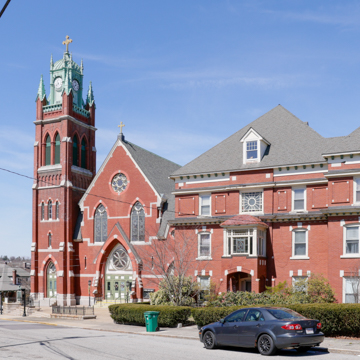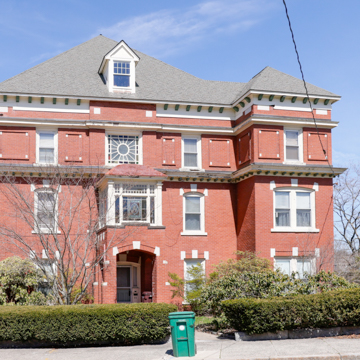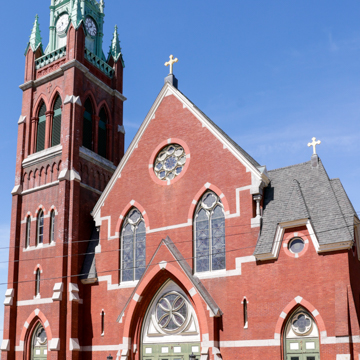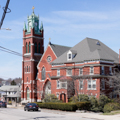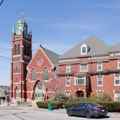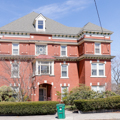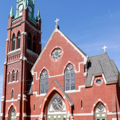You are here
Précieux Sang
Until this church was built, the French Canadians of Woonsocket had no parish of their own. Instead they worshiped at the Irish Catholic church of St. Charles Borromeo ( WO32). Although Précieux Sang has a similar asymmetrical elevation with corner tower and gabled nave, unlike the earlier church, which is built in gray stone, this is of more economical brick with desultory white masonry trim. As in much polychromatic Victorian design, color changes emphasize the plethora of small-scale features—now a gable, now a pointed-arched opening, now a diminutive rose window—that seem to have been assembled piece by piece, as a collection of motifs, rather than to have been composed as a whole. The result, at this scale and with this degree of contrast in colors and materials, is quaint, but also compelling in the manner in which the components assert themselves as primal signs of “architecture” and “Gothic church,” like pieces in a box of Victorian polychromatic building blocks.
Allegedly the design of Précieux Sang derived from that of St. Charles Borromeo, the composition of this facade generally recalling that of the earlier church. Inside are far greater similarities in the comparable handling of the pointed ribbed plaster vaults and their focus on a delightful Gothic Revival altarpiece. Here the saints stand in niches outside a miniature replication of a Gothic church which seems to have been lifted from an illuminated medieval manuscript. The balconies (once also in St. Charles Borromeo, but there removed) are here squashed under the aisle arcades with their
Writing Credits
If SAH Archipedia has been useful to you, please consider supporting it.
SAH Archipedia tells the story of the United States through its buildings, landscapes, and cities. This freely available resource empowers the public with authoritative knowledge that deepens their understanding and appreciation of the built environment. But the Society of Architectural Historians, which created SAH Archipedia with University of Virginia Press, needs your support to maintain the high-caliber research, writing, photography, cartography, editing, design, and programming that make SAH Archipedia a trusted online resource available to all who value the history of place, heritage tourism, and learning.


